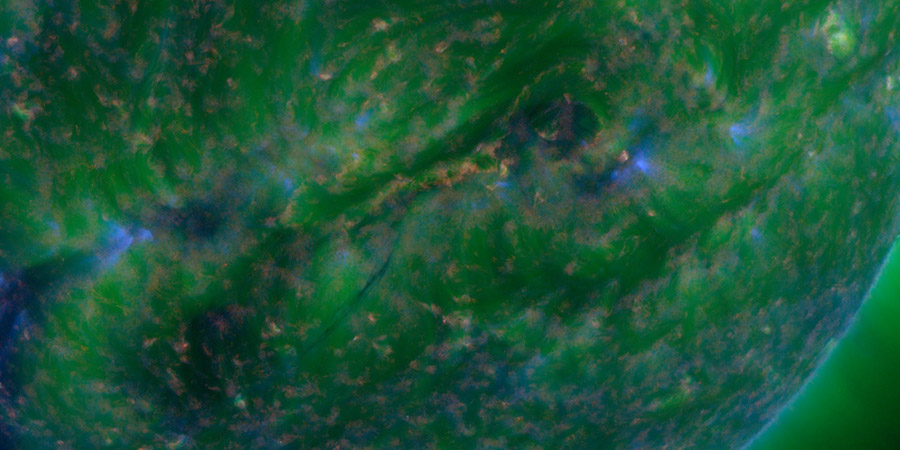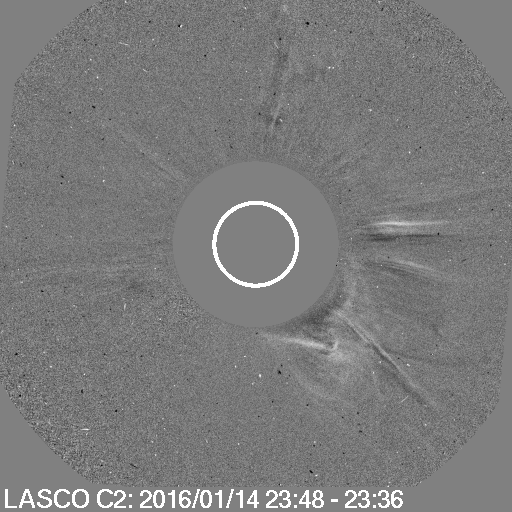Filament eruption, weak CME
Friday, 15 January 2016 15:45 UTC

A filament on the southern solar hemisphere erupted last night and launched a minor coronal mass ejection towards Earth.
An asymmetrical full halo coronal mass ejection was launched at a speed of 250km/s according to the SIDC. This is very slow for a coronal mass ejection and while it is likely that this coronal mass ejection will arrive at Earth, it should blend in with the ambient solar wind due to the slow speed meaning there will likely not be a noticeable shock arrival at Earth.

Animation: ESA NASA SOHO/LASCO C2 animation of the asymmetrical full halo coronal mass ejection.
What that means is that it might be hard to spot this CME in the solar wind data from ACE when it arrives at Earth. The total strength of the IMF (Bt) will likely become enhanced when this coronal mass ejection arrives and that could be as late as Tuesday, 19 January. If the Bz turns southward around that time we might see active geomagnetic conditions which equals a Kp of 4 but anything beyond that is unlikely. We have to stress that this is not a major coronal mass ejection but every bit of activity is welcome in these quiet times we'd say!
Thank you for reading this article! Did you have any trouble with the technical terms used in this article? Our help section is the place to be where you can find in-depth articles, a FAQ and a list with common abbreviations. Still puzzled? Just post on our forum where we will help you the best we can!
Latest news
Latest forum messages
Support SpaceWeatherLive.com!
A lot of people come to SpaceWeatherLive to follow the Sun's activity or if there is aurora to be seen, but with more traffic comes higher server costs. Consider a donation if you enjoy SpaceWeatherLive so we can keep the website online!

Space weather facts
| Last X-flare | 2024/03/28 | X1.1 |
| Last M-flare | 2024/04/25 | M1.3 |
| Last geomagnetic storm | 2024/04/19 | Kp7 (G3) |
| Spotless days | |
|---|---|
| Last spotless day | 2022/06/08 |
| Monthly mean Sunspot Number | |
|---|---|
| March 2024 | 104.9 -19.8 |
| Last 30 days | 135.5 +27.6 |


